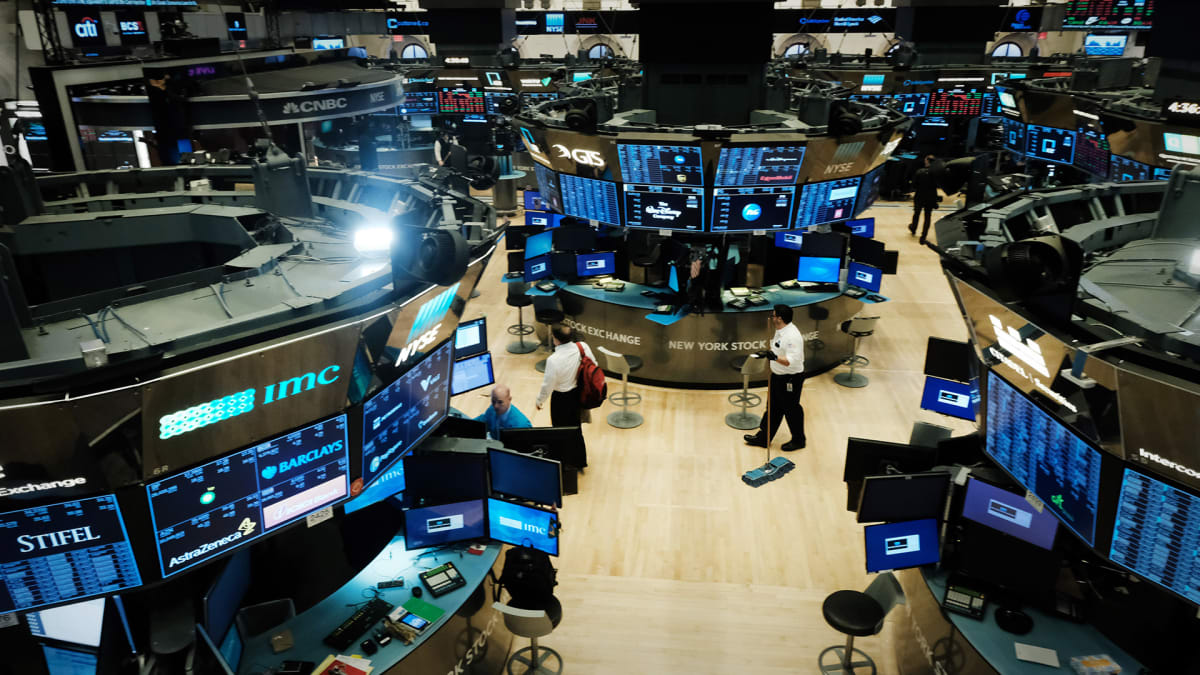
U.S. stocks closed firmly lower Thursday, recording the biggest single-session decline in six weeks, as investors react to the Federal Reserve's hawkish interest rate hike while tracking similar decisions from central banks in Britain and Europe and further signals of recession in the world's largest economy.
The Fed lifted its benchmark lending rate by 50 basis points, capping a year of seven hikes that have added 4.25% to the Fed Funds rate, and stated that further increases would be needed. The central bank also indicated that it will likely take the Fed Funds rate past 5%, implying at least another 0.75% in cumulative hikes, before holding at the level for most of next year.
A weaker-than-expected reading for November retail sales, which showed a 0.6% monthly decline -- the biggest of the year -- amid a pullback in gas prices and broader declines in discretionary spending added to the sell-off. November industrial production was also weaker, with output falling 0.6% when compared to the previous month.
"We're into restrictive territory," Fed Chairman Jerome Powell told reporters in Washington. "It's now not so important how fast we go. It's far more important to think what is the ultimate level (and) how long do we remain restrictive."
"There is a strong view on the committee that we'll need to stay there until we're really confident that inflation is coming down in a sustained way and we think that will be some time," Powell cautioned.
Fresh inflation forecasts from the Fed's rate-setting committee see elevated price pressures throughout most of next year, even amid a gloomy prognosis that includes flatlining economic growth and a surge in unemployment. As as a result, officials think rates will need to rise further, and stay elevated for longer, until there is "substantially more evidence to give confidence that inflation is on a sustained downward path."
Powell told reporters in Washington that Fed projections don't include any kind of rate cut in 2023, warning that 'historical experience cautions strongly against prematurely loosening policy."
Not too many investors appear to agree. The CME Group's FedWatch, which tracks movements in Fed Funds futures trading, suggests the Fed will likely pause its rate hike cycle in March, and could even begin cutting by the latter part of the year, as inflation slows and the economy tips into recession.
Nonetheless, the hawkish signaling snuffed out a three-day rally on Wall Street, triggered in party a softer-than-expected November inflation reading, and powered a sharp spike in both the dollar and Treasury bond yields.
Benchmark 2-year notes, the most-sensitive to interest rate changes, were marked 8 basis points higher in New York trading at 4.243% while 10-year notes eased to 3.443% following the retail sales data. The U.S. dollar index, which tracks the greenback against a basket of six global currencies, was marked 0.72% higher at 104.519.
On Wall Street, the S&P 500 was marked 99.5 points, or 2.5% lower by the close of trading while the Dow Jones Industrial Average slumped 2.25%, or 764 points. The Nasdaq was down 360 points, or 3.23%.
Global stocks were also hit by the surprisingly hawkish Fed tone, as well as a series of weaker-than-expected November economic data from China, with Asia's MSCI ex-Japan index falling 1.6% into the close of trading and the Nikkei 225 slipping 0.37% in Tokyo.
In Europe, where traders reacted to a widely-telegraphed interest rate hikes from the European Central Bank, the region-wide Stoxx 600 was marked 2.85% lower by the close of trading, its biggest single-day decline in a month. In London, the FTSE 100 ended 0.93% after the Bank of England delivered, as expected a 50 basis point increase to its benchmark Bank Rate, taking it to 3.5%.
Global oil prices were also lower, with upside moves capped in part by the firmer U.S. dollar and news that the Keystone pipeline, which takes crude from Canada to the Gulf Coast, would reopen following a spill last week. EIA data also showed a bigger-than-expected build of domestic crude stocks over the week ending on December 9.
Brent crude contracts for February delivery were marked $1.51 lower at $81.19 per barrel while WTI futures for January fell $1.26 to $76.02 per barrel.







